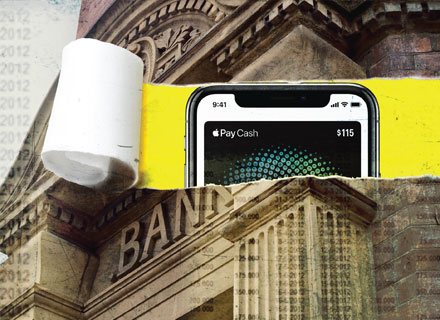Banking by its nature is a dehumanising experience.
From its beginnings in the 17th Century right up to today’s fast-moving and disruptive banking market, banking is built on data and ledgers.
Money in versus money out. Savings versus borrowings. Risk modelling and credit rating metrics. These are the fundamentals on which banking is built. The human customer can at times feel quite distant. A user of the service is not the focus for how it is built.
Over the past 20 years, banks have attempted to change this and to humanise this narrow view of their customers. They have surrounded their core banking platforms with peripheral systems that deliver other products, trying to provide a holistic view of how their customers interact with their organisation. However, this approach is deeply limited by the underlying bank ledger and cannot address the complexity of a customer’s life and their product needs.
In contrast, ‘non-bank’ businesses have taken a different view of their customers and are delivering lifestyle supporting outcomes that make their brand relevant in each moment of their customers’ lives. These non-banks are entering the market at a rapid rate, blurring the boundaries of the financial services sector and competing directly with banks in the process.
Apple, Amazon and others have understood that by being hyper-relevant at a customer’s single click, they can reinforce their brand value, becoming a trusted and knowledgeable customer partner. Building on that trust allows non-banks to extend their direct engagement with end-users and add new services that further deepen their daily relevance.
The huge advantage that these non-bank organisations have is that they are aware of the value of data and by collating it methodically, they know their users intimately. They also know how to utilise this data best in a way that no traditional bank can compete with at the moment. Plus, unlike the banks, these businesses have made progress through digital platforms that take a holistic view of their customers and how they want to access their money and use the service, and not a limited ledger-like perspective.
Faced with such fierce competition, most banks have come to realise that what sets them apart is their brand value (banks remain trusted as guardians of their customers’ money) – and that innovation within data-driven services is key to increasing brand loyalty. This realisation is fuelling innovation within established banks and also reinvigorating efforts to drive innovation in customer service, product quality, and the ability to use data to curate product offerings. In a nutshell: KYC (knowing your customer) is king, queen – and everything in between.
To date however, the banks’ tech platforms have been ill-suited to payment processing and to the demands of modern-day customers. Cumbersome legacy systems have also lacked the agility and rigour to be acceptable in a regulated context.
Modern Platforms and low-cost financial services
Because of these challenges, it is likely that the future of banking will couple modern platforms (designed to service a customer’s broad range of needs) with the ability to deliver compliant and low-cost financial services, including payments. On a practical level this means offering more services through mobile apps providing a tailored ‘bank in your pocket’ that understand users’ requirements and limits. Placing such a solution at the core of a bank, credit union or building society will transform it into an organisation that is highly relevant to its customers, both now and for the foreseeable future. While the core banking service remains broadly unchanged, the way that services are accessed and offered to the customer becomes hyper-personal.
Banks are changing their legacy platforms to deliver this revolution, but they are not alone in doing so. The rise of the challenger banks was just the first stage in a far greater revolution that is being ushered in through the growth in the non-bank banks. Like the banks, these brands have huge customer loyalty. They may not be the first places that customers would turn for banking services but if they can offer a credible, personalised banking service and platform then they will provide a strong challenge to established banking players. While banks may regard the non-banks as a threat, they can’t ignore the development.
Whether a bank, credit union, building society or a growing enterprise, each one can offer its customers with an agile, personalised ‘Me Bank’ – they just need the right tech platform to do so.


